Away
A Long Weekend (or a Short Week) in Abitibi-Témiscamingue
Journalist and photographer Léa Beauchesne discovers a majestic region, where lakes and great pines defy time.
Text & photos—Léa Beauchesne
In Partnership with
![]()
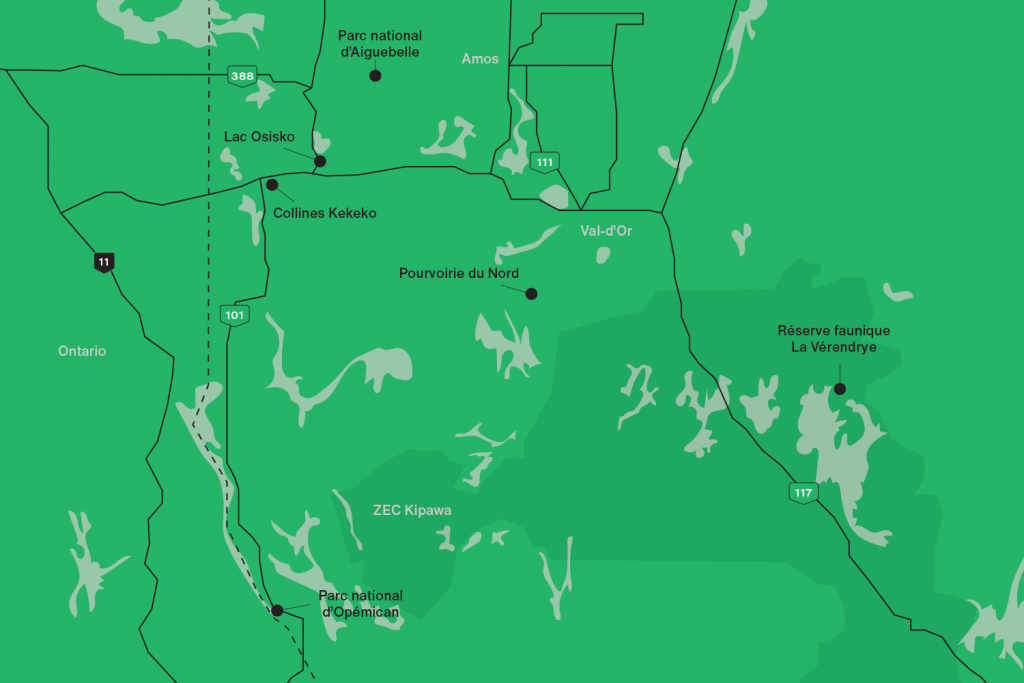
– Day 1 –
Abitibi-Témiscamingue has been a part of my imagination as a Quebecer for a long time. Through stories like Biz’s Mort-Terrain and documentaries like L’Erreur Boréale, by Richard Desjardins, this northern part of Québec had taken on mystical dimensions in my mind.
I set off thirsty to drink up the kilometres of forest that lead to this territory of 20,000 lakes.
From Sainte-Adèle, I decided to take Highway 117, where the Laurentian Mountains awaited me. Easy to drive during the day, this loop through the north of the Laurentians and Abitibi-Témiscamingue had me already imagining my next trip. There are several lunch options in Mont-Laurier. Take this opportunity to refuel (the next stop isn’t until Le Domaine, about 100 km away).
Time flies, soundtracked by playlists and podcasts downloaded to accompany me on the road. I love Radio-Canada’s themed playlists, especially after discovering a happy medley called Abitibi-Témiscamingue. In terms of audiobooks, Arvida, by Samuel Archibald, and Kuessipan, by Naomi Fontaine, invite me into their Nordic universes.
The drive through the Réserve faunique La Vérendrye sets the tone for the region’s landscapes. Miles of forest briefly give way to reservoirs of water that stretch into infinity. Originally from the North Shore, I’m naturally more partial to a spruce fighting for a few rays of sunlight than a noble apple tree full of fruit in the field. I love Abitibi-Témiscamingue at first sight of its white pine tips.
I arrive by crossing through Val-d’Or, in the direction of Amos. My first stop in Abitibi territory is Refuge Pageau. This place has been on my mind since BESIDE’s first issue, five years ago. The world of the refuge’s creator, Michel Pageau, is one where every wild animal in need is given a second chance. After more than 30 years of work, Refuge Pageau is now a rehabilitation sanctuary for boreal forest animals. Respect for animals is still the bedrock of the project.
“In an ideal world, no animal would be here.” Mylène dreamed of working at Refuge Pageau since she was little. She introduces me to each animal, who she greets by name. Wolves, ravens, moose — every resident has their own story.
Many are permanent residents because they cannot be released. Yogi, the black bear, is almost blind. He uses his big snout and ears to locate us and innocently approaches for a snack. In another enclosure, fearful cubs prepare to return to the wild. They’re in great shape and haven’t been habituated to human beings. Their instincts are intact for a life in the forest.
It’s 6 p.m., but the team is still busy at the site. Nathalie Pageau pokes her head out of the nursery, while Mathilde Pageau ushers protected birds safely back into enclosures, followed by Groseille, a brant goose who has become attached to the young woman and pecks at me if I get too close. After all these privileged encounters, it’s time to rest. While saying my goodbyes to the white-tailed deer that roam freely on the site, I also take my leave of Mylène, who is off to check on a little bird that was released yesterday. For dinner, I opt for the chalet’s kitchen, but locals in the area tell me that Bistro Mediterraneo is a great option for its local ingredients and reliably tasty dishes, for both carnivores and vegetarians.
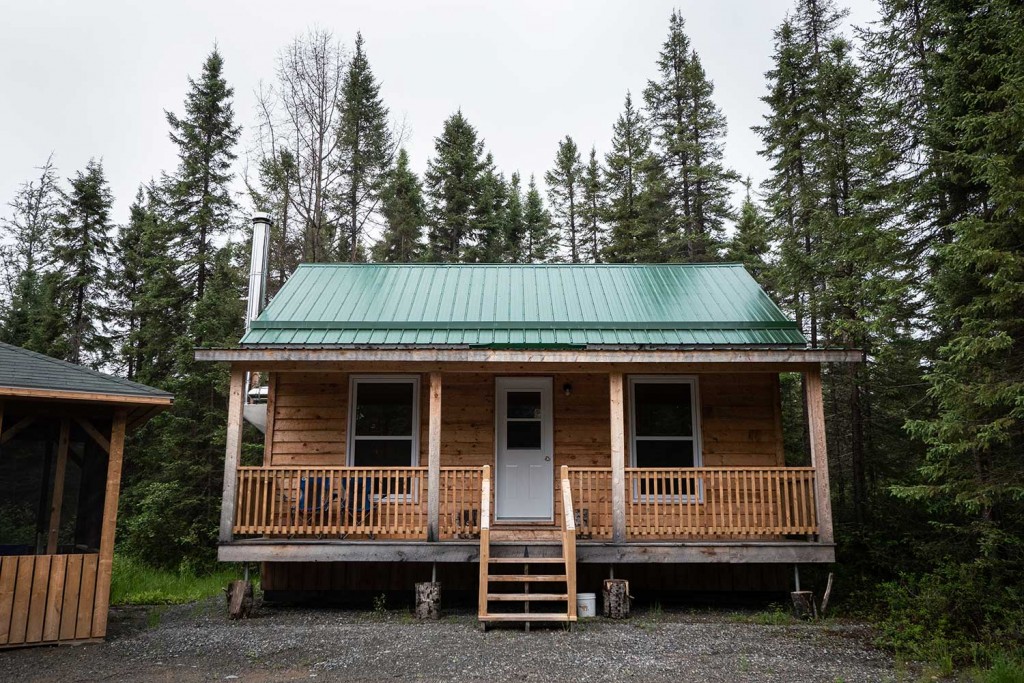
– Day 2 –
Dawn makes its way through the windows of the Refuge Pageau chalet, a wooden house near the wolf enclosure, sheltered by tall pines. The night was cool enough that I kindled a small fire in this perfect cocoon, which can easily accommodate four people. I depart and point myself in the direction of Val-d’Or, toward the Northern Outfitters, which is located less than an hour from the city. For a proper breakfast, I stop by Bénédictine, where you can find locals standing in line, even on a Thursday morning.
After 30-odd kilometres in the woods, I pull up to the outfitter I’ve been looking for. It’s very different from those I’ve visited on my travels so far. To the right, the site is crowded with vehicles parked along the shore. Everyone is fishing! On the other side are a few chalets in a row near the Decelles Reservoir. I’m only looking at a tiny part of this inland sea, and I’m already in awe. A century ago the landscape was very different. The reservoir used to be a lake. Then, in the early 1940s, the Noranda Power Co. built a dam upstream on the Ottawa River, which gradually raised the water level to form this immense expanse.
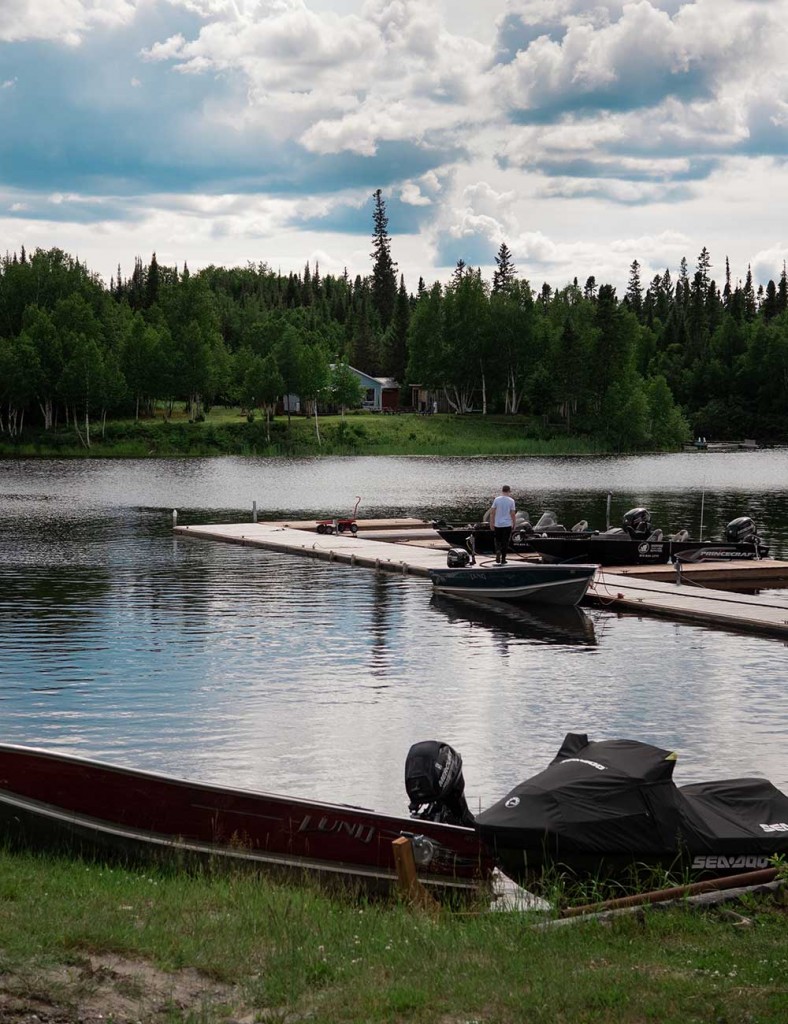
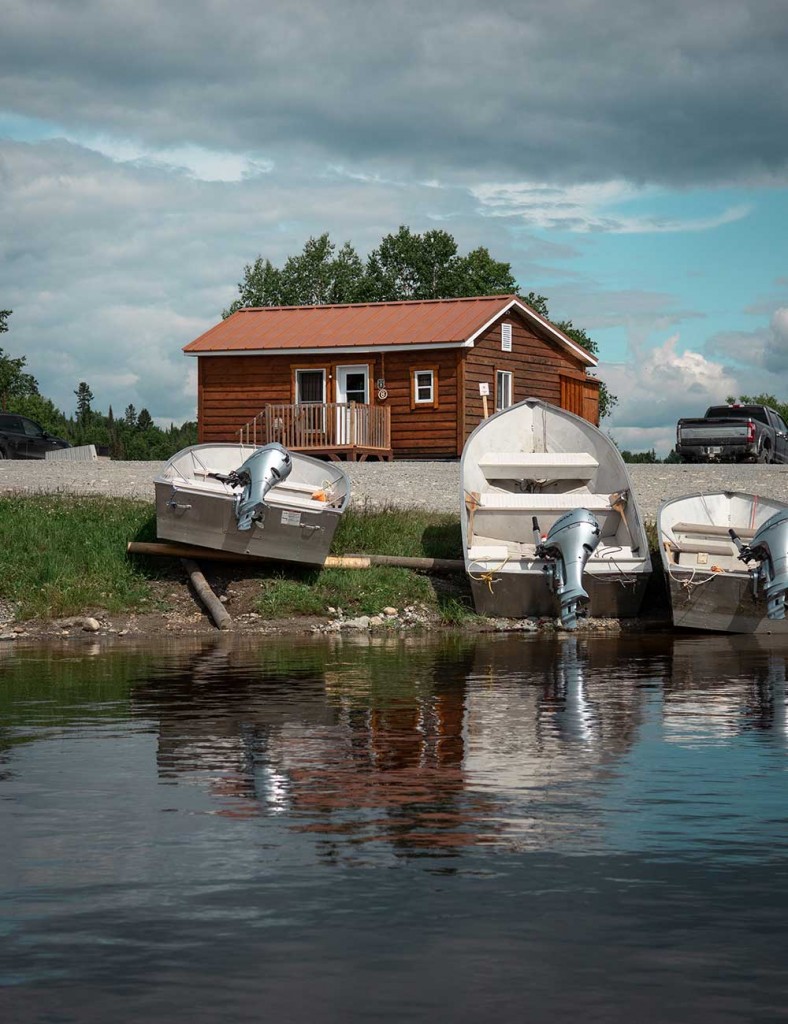
David waits for me at the main chalet. We’re going to embark on a search for the famous walleyes that populate the region’s lakes.
I’m used to fishing in modest four-cylinder-engine boats, and so I’m intimidated by the huge machine in front of me. “It’s really a large body of water, so there’s no choice but to use a large motor.” A 200 km2 playground opens up to us.
“Here we mostly fish walleye, pike . . . and catfish!” David has lived and worked at the outfitter since he was old enough to earn a salary, which means it’s been a solid 15 years that this guide has been roaming the reservoir. He makes his way across the meanders and dips as though everything were clearly marked by road signs. After about 30 minutes, we slow down in a quiet corner with no other boats. We drop our lines a few times. I catch a lot of catfish. Thanks to various fishing tactics belonging to only experienced fishers, he finally brings up a walleye. “Do you want to keep it?” he asks. I tell him that if it’s in good shape, we should put it back in the water. David seems happy with my answer. He would like to see more people release their catch, which would be good for fish biomass, according to him. He gently unhooks each little creature to give it back its freedom.

Satisfied by our fishing trip, we head for the main wharf. After asking him all of my questions about local fish, the place’s origins, and his own, I ask for his last name, which he tells me is Ayotte Doroftei. One name is Québécois, one is Romanian. I’ll be told this several times during my stay: many immigrant families came to Abitibi-Témiscamingue at the turn of the century.
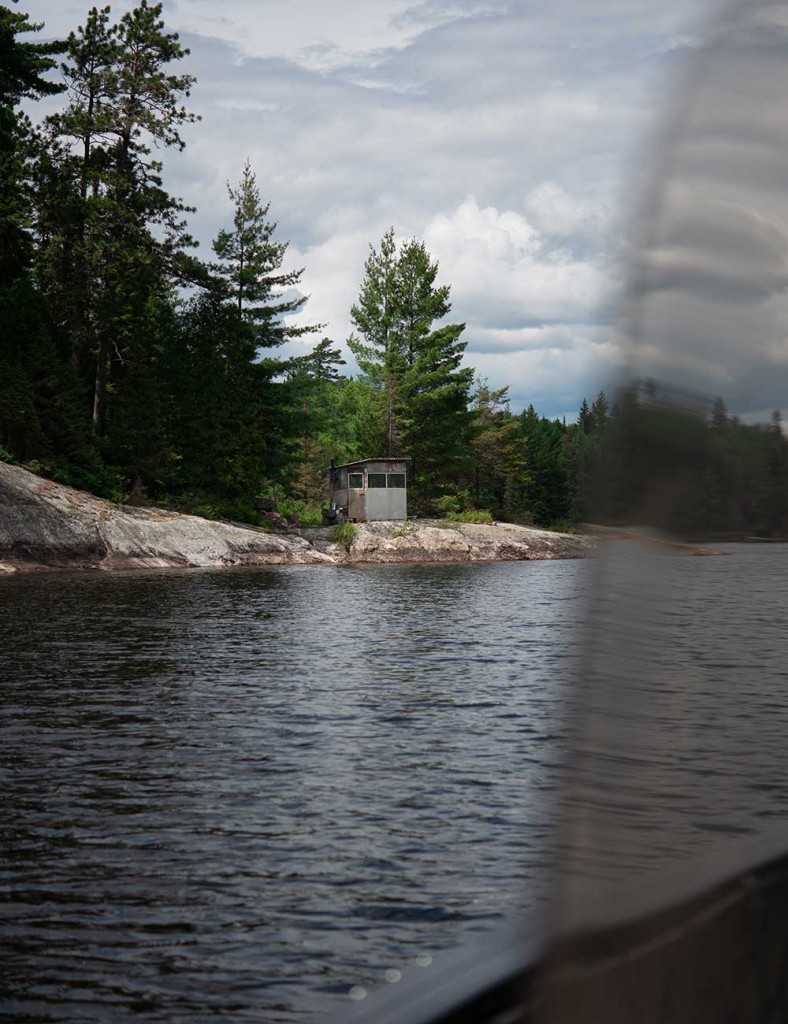

The boat goes quickly, but the banks seem to be moving slowly. We float in these mysterious waters, between conifers and rocky islands.
These Nordic landscapes imprint themselves reassuringly on my retinas. This second day wraps up like the first, in a soft fatigue of new memories.
For those who want to sleep in Val-d’Or, Entre Lemoine et l’Arbre offers magnificent rustic and eco-friendly cabins.
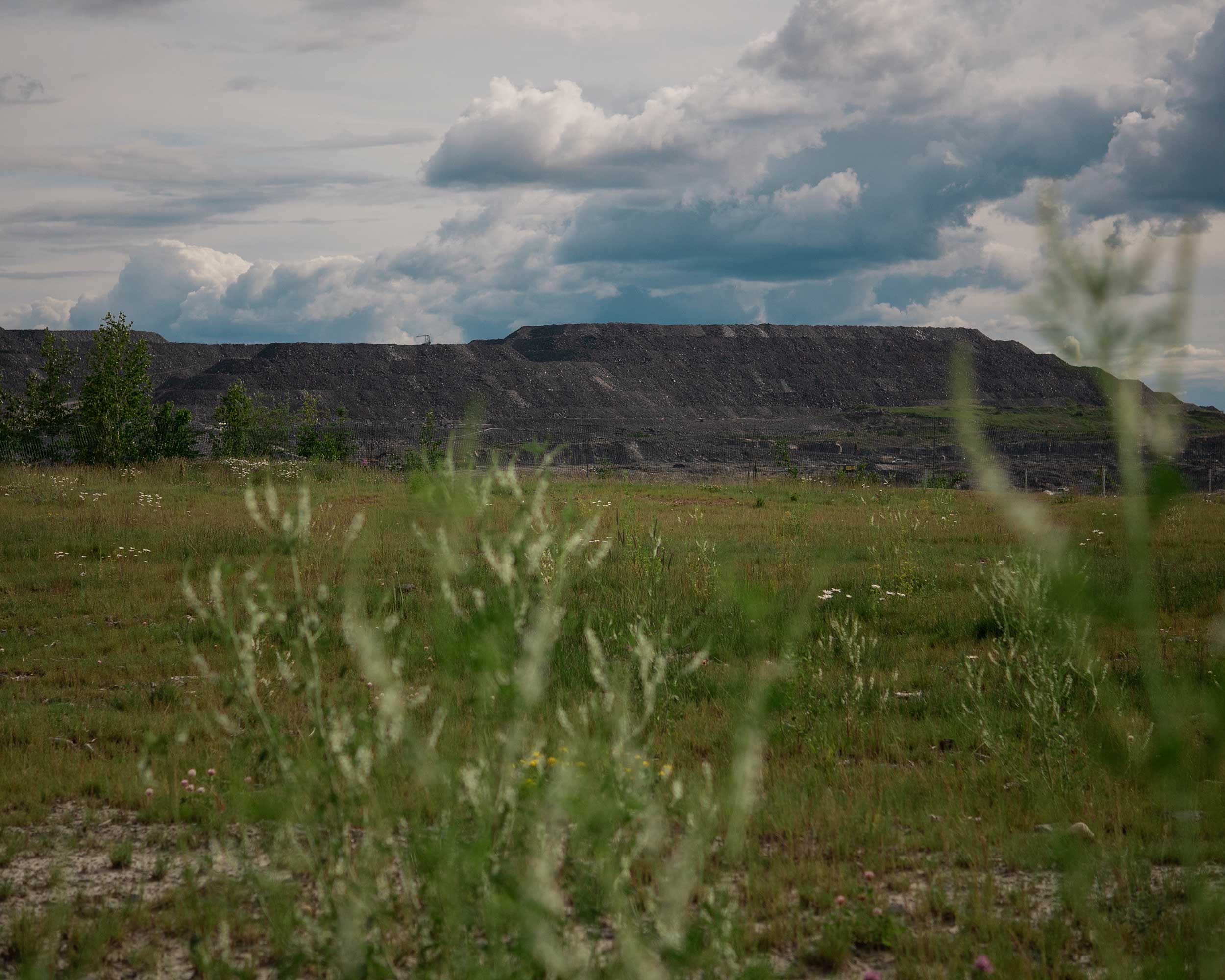
– Day 3 –
Fact: coffee tastes better watching the sunrise over a lake. I leave the comfort of my little chalet to follow the road to Rouyn-Noranda. Crossing Val-d’Or, then Malartic, you can see the typical square houses of Québec mining towns. You can’t miss the Canadian Malartic Mine, which has torn up the ground over a span of three kilometres. I stop on the side of the road to gauge this gigantic hole. It’s sobering to ponder what it takes to extract these resources from the ground. I glance down at my smartphone and imagine its components made of rare metals, and try to picture the reality of the labour that went into gathering them.
There’s no doubt that nature drew me to Abitibi-Témiscamingue — its wilderness and vast expanses. I’m somewhat surprised, then, by the cultural and gourmet offerings that I discover when I arrive in Rouyn-Noranda. It reminds me of the incredible city of Gaspé.
Pedestrian street, comedy festival, bouldering centre, mobile spectacles, cocktail bars; the people of Rouyn know how to live.
For breakfast or pastries to go, the locals meet at St-Honoré. While making coffees, Simon, the owner, greets each customer by first name. In the kitchens, master French pastry chefs, who arrived in Québec in search of open spaces, make 1,001 well-buttered products. “If it’s fun, we do it.” It’s a business philosophy that also justifies Simon selling privately imported natural wines at his bakery.
Just outside, the public market is in full swing, as it is every Saturday in the summer. We quietly line up to fill our basket with fresh herbs from Les Potagers du Pouce Vert, cheddar from Fromabitibi, or mushrooms from the Champignonerie. I’m already thinking about my next meal, but in the meantime, I suppose I’ll explore a bit more. The city is home to a superb centre for contemporary artists, L’Écart, as well as the MA – Musée d’Art de Rouyn-Noranda. The Les Tourneurs exhibit is running throughout the summer: discover prints by dozens of artists, from Marcel Barbeau to Jordi Bonet.
If you want to get moving, there is no shortage of options. For a short hike before eating, head to the Collines Kekeko (hills). The observation tower offers a 360-degree view of the surroundings. To stay downtown while enjoying nature, head to the Sentier polyvalent et circuit cyclable (Osisko Lake Trail), which offers a nice view of the area. Right next door, on the peninsula, you’ll find the Poisson Volant, the summer stage of the FME (Festival de Musique Émergente). The festival (absolutely wonderful according to everyone I know who has been) takes place in September, and there are shows almost every week. You might also come across an ambulatory show thanks to Au Pays des Pick-Up.
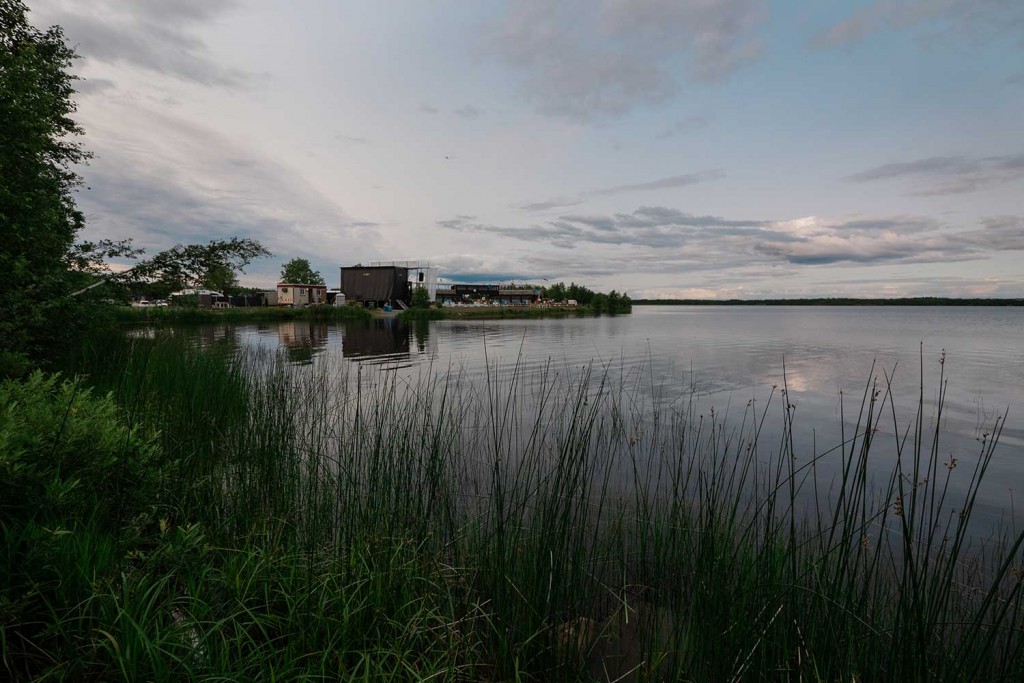
I continue my Rouynorandian discoveries on Perreault Street, a sacred summer pedestrian zone. Each business has crafted a patio for the occasion. The two nicest: Mudra’s sports area, with its outdoor bouldering wall, and Le Paramount’s, with its minigolf course and rooftop patio. I carefully avoid hitting any balls, but I can’t help but succumb to the temptation of a waffle pogo (and it’s delicious, obviously).
For an aperitif, head to Trèfle Noir for a good beer or the brand-new cocktail bar, Le Polonais. The super-friendly owners are there when I visit; they’re testing out their menu and invite me to join them.

“The Polonais” is a cocktail honouring Tatiana and Véronique’s paternal grandparents, who came to Rouyn in the heyday of the region’s mining developments.
Judging by the magnificent scene here, their dream seems to have worked out. The evening slips through our fingers, and Charles, one of the partners, suggests I have dinner at Pizzé, right next door (which they also own). He convinces me (major-league pizza fan) by pointing out that everything is delicious and homemade from loads of local products. For city accommodations, there are several high-end establishments such as the Le Noranda or the Hôtel Albert.

– Day 4 –
Another advantage of Rouyn-Noranda is its proximity to nature. The region is a must for anyone who enjoys water-based adventures. If you’d rather entrust experts with the planning, allow Exode bâtisseur d’aventures adventurers to help you discover the Abitibi-Témiscamingue landscape.
For my part, I take the road to Parc national d’Aiguebelle, a little paradise for outdoor enthusiasts. As soon as I arrive, Lake Loïs welcomes me with all of its tranquility. The skyline ends on the other side of the bay, where the Ojibway Campground is located. We can feel a vast expanse of water to be explored just beyond a cape lush with pines and larches. Romain, the conservation manager, explains that the park has existed for 35 years, but that the site was designated a wildlife reserve in 1945. “At that time, we were logging everywhere, and then we realized that it might make sense to protect a certain part of the territory.” His colleague Sabrina suggests some essential hikes in the park and books me a boat for the sunset.
In Abitibi-Témiscamingue, lakes are the norm and mountains the exception. The park fits into this exceptional framework with its many ridges that can be walked along for hours (or days).
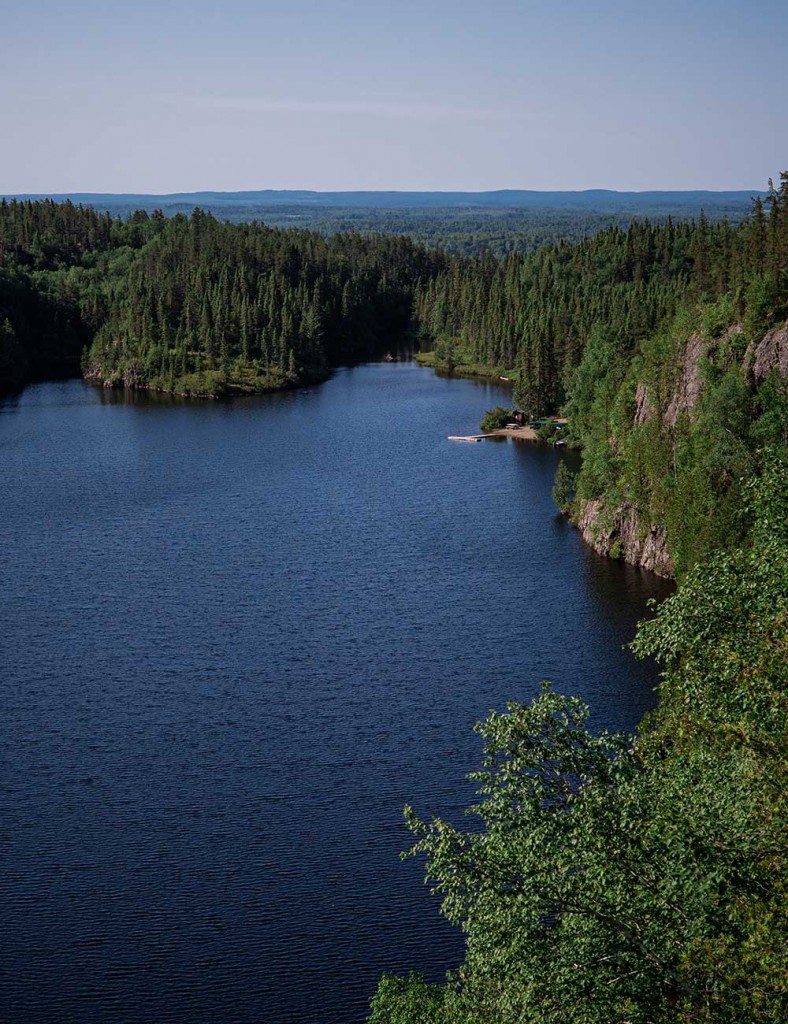
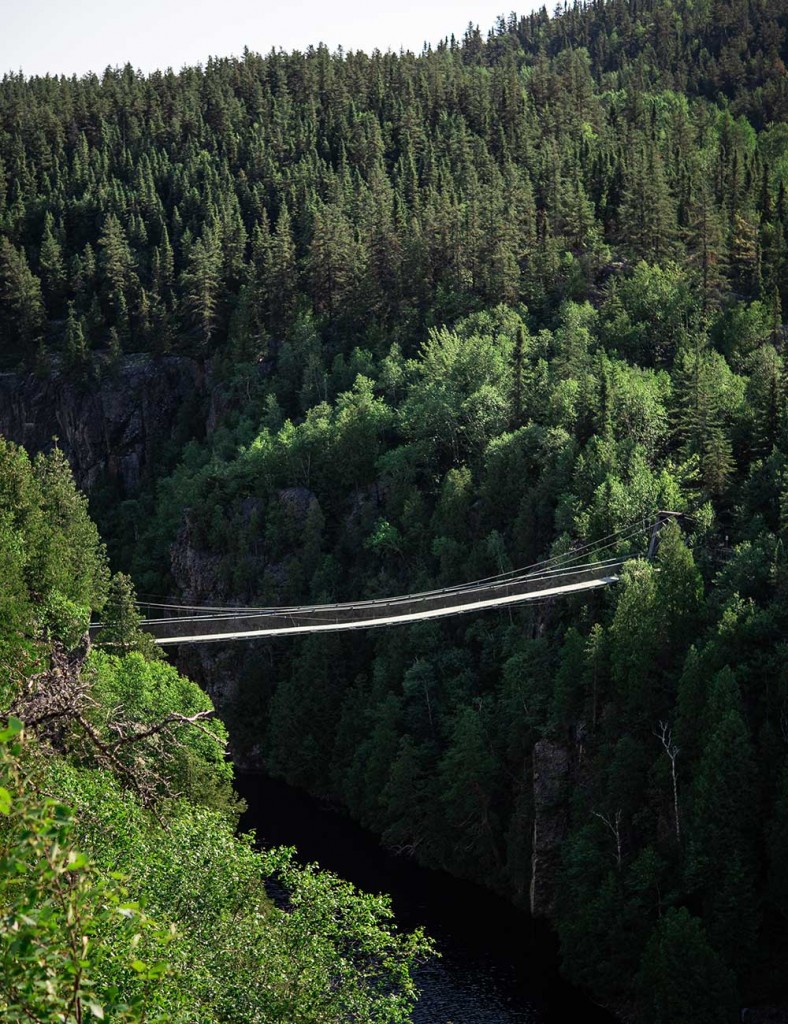
Discover the forest surrounding Lake Sault along the Les Paysages Trail. Several hundred-year-old pines command respect here. Even though it’s the weekend, it’s calm on the trail.
Upon arrival at the lookout, I take the spiral staircase. The towering structure sinks down into the riverbed, where a beaver has built a home.
A little farther away, the La Traverse Trail is also worth a detour. This loop takes you around La Haie Lake by way of a footbridge, perched 20 m above the water. The magnificent rocky cliffs that line the landscape offer a choice habitat for several species of bird, such as the peregrine falcon, a protected species.
Back at the campsite, I cook dinner while listening to laughter around the campfire at the site next door. Priceless memories are being created. The sun begins to set on the horizon. It’s easy to see why we got hooked on the famous carte soleil (Québec health card) photo, with its hazy celestial body and iconic treeline.
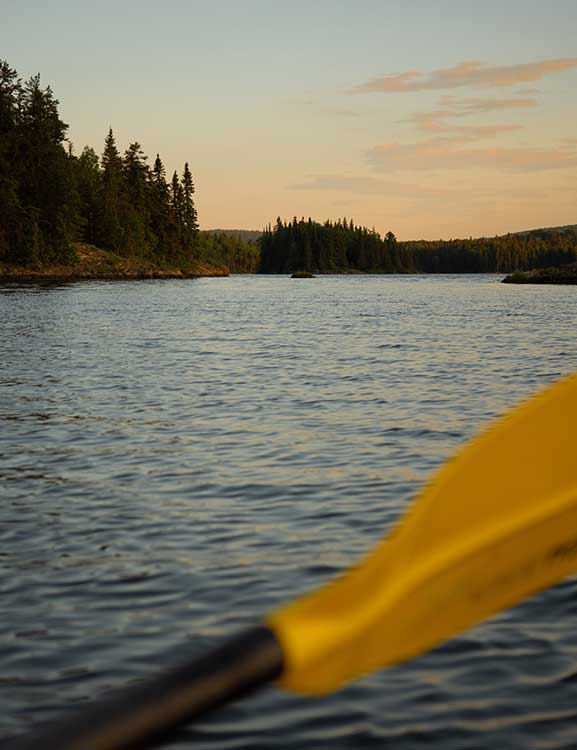
Sitting nicely in my kayak, I set off on the calm waters of the day’s end. A small island of rock and lichen grabs my attention. I settle in to watch the show; it’s a lot for a single set of eyes to take in.
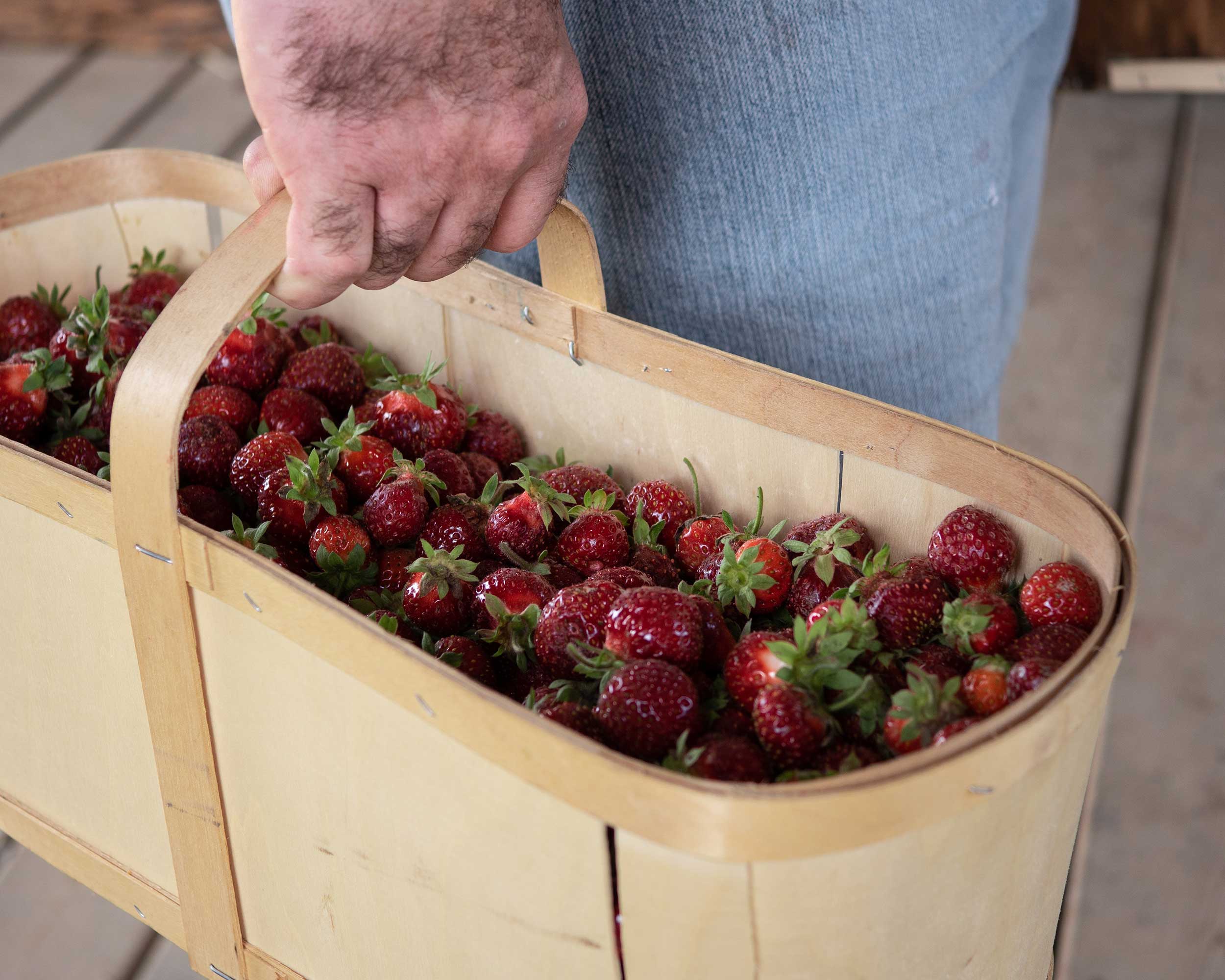
– Day 5 –
I leave the park before my neighbours even wake up. A three-hour drive separates Aiguebelle from its brother in Témiscamingue: Parc national d’Opémican, the Sépaq family’s youngest member. As you head south, the angular nature of the region’s north gives way to rounded lines of hardwood and fields, and several farms dot the landscape. I stop at the Ferme Nordvie. A pretty wooden building towers over the middle of the strawberry fields. U-picking is well under way. Families march to the counter, their carts full of delicious organic strawberries. In hot weather, the fresh fruit slush is a must.
On the outskirts of Ville-Marie, Lake Témiscamingue marks the border with Ontario. It’s Monday, and the village is peaceful as business owners catch their breath. There are a few gems, like Caféier Boustifo and Les Chocolats Martine, a shop filled with delights located right near the lake.
Searching for a lunch spot on my cellphone, I have faith in a small dot on Lake Kipawa. At worst, I’ll have a great view.
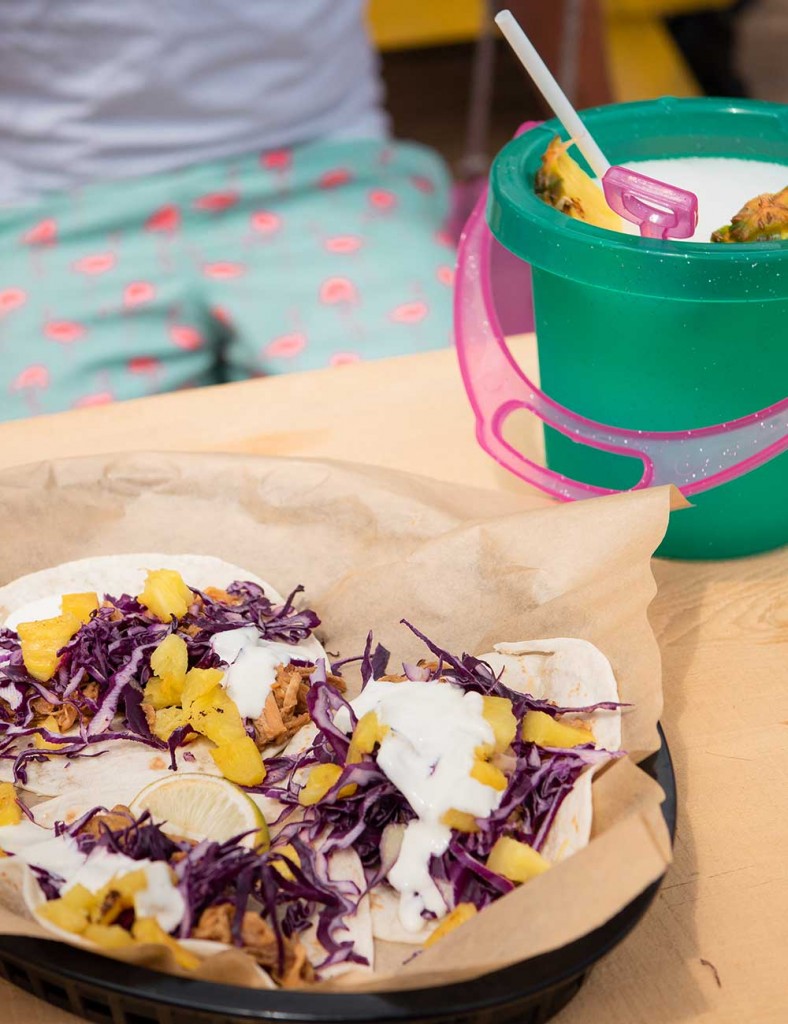
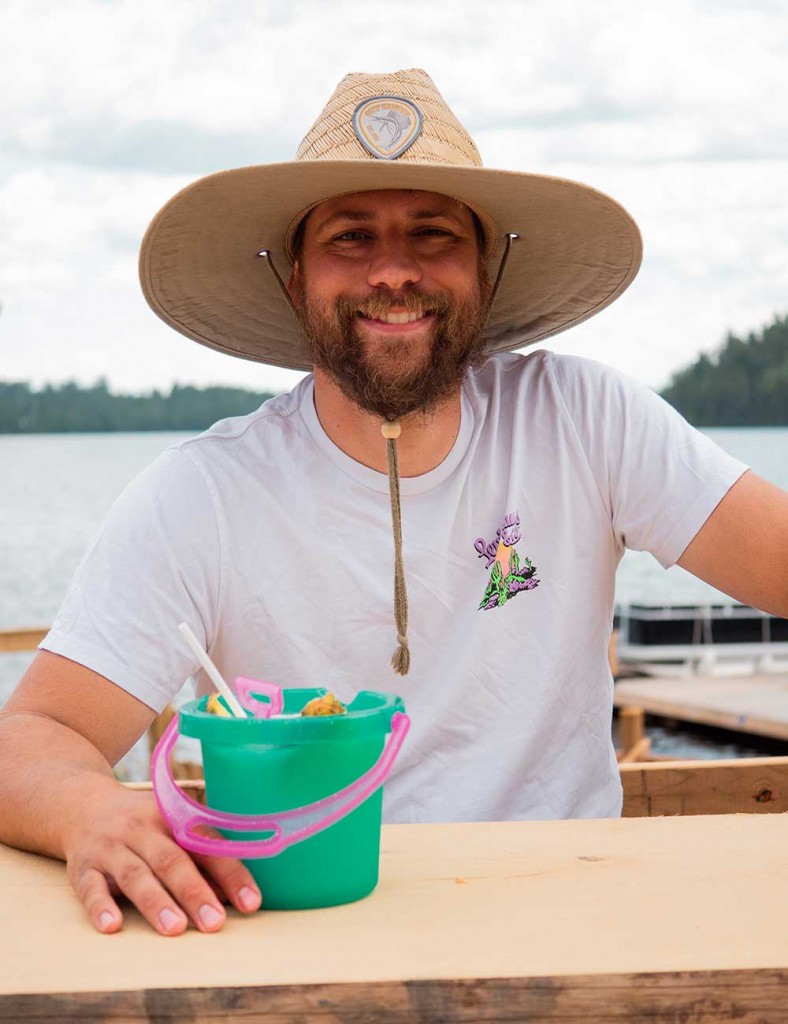
A rather improbable discovery unfolds as I descend to the water: a magnificent terrasse; a flamingo-pink canteen; vacationers sipping cocktails, sitting on swings.
The Kabane du Panache feels like a cool breeze on a hot July day. Sophie-Audrey makes me tacos and tells me to go to the bar to chat with her boyfriend, Anthony. In this Laniel establishment, located near the Kipawa River sector of Parc Opémican, the couple welcomes tourists and residents with a menu that perfectly blends Québec and Mexican flavours.
A few kilometres down the highway, signs for the Pointe-Opémican sector begin to appear. The road glides by under the tops of tall white pines, which protect us from the rest of the world. The welcome building fills with sun through floor-to-ceiling windows. Jack-of-all-trades manager Carine takes the time to tell me about this park, which she saw come into existence. The work of an entire community led to its opening in 2019. Its history deserves our attention — and is highlighted directly at the site — along with the remains of several buildings dating back to the time of log drives.
In the La Pointe sector, there are several very accessible hikes, such as the Piers Trail. At the summit, settle onto the flat rocks to admire Lake Témiscamingue and forest as far as the eye can see, with just an occasional kayak criss-crossing the surface of the water.

– Day 6 –
It’s time to head home, but I wanted to enjoy the first rays of sun before leaving this cherished region. For the second time in two days, I find myself alone on an incredible body of water. I savour these exceptional moments, when the only sounds are of birds flooding the forest, stealthy dragonflies, and my paddle in the water.
All right.
It’s time to go.
Even though I would have liked to spend several days in each of the places I visited, I find myself grateful for all that I experienced in the fabulous land of Abitibi-Témiscamingue.
Léa Beauchesne prefers escaping to wide-open spaces over walls and asphalt. Journalist and creator, Beauchesne likes to play with words and images to create timeless moments where humans and nature collide. She doesn’t like to worry, except when it comes to the environment. You’ll most often find her in the mountains at the end of a climbing rope, on her bike, or on her skis, surrounded by too many dogs and preferably just one other human.
Tourisme Abitibi-Témiscamingue is a hub for regional tourism, structuring and promoting efforts and initiatives. Consultants assigned to the development of various areas of the tourism industry — the outdoors, festivals, events, culture, outfitting, snowmobiling, etc. — work hand in hand with peers and organizations concerned with creating and developing competitive, quality products.
Never Miss Another Issue
Two issues per year
25% OFF previous issues
Free Shipping in Canada






